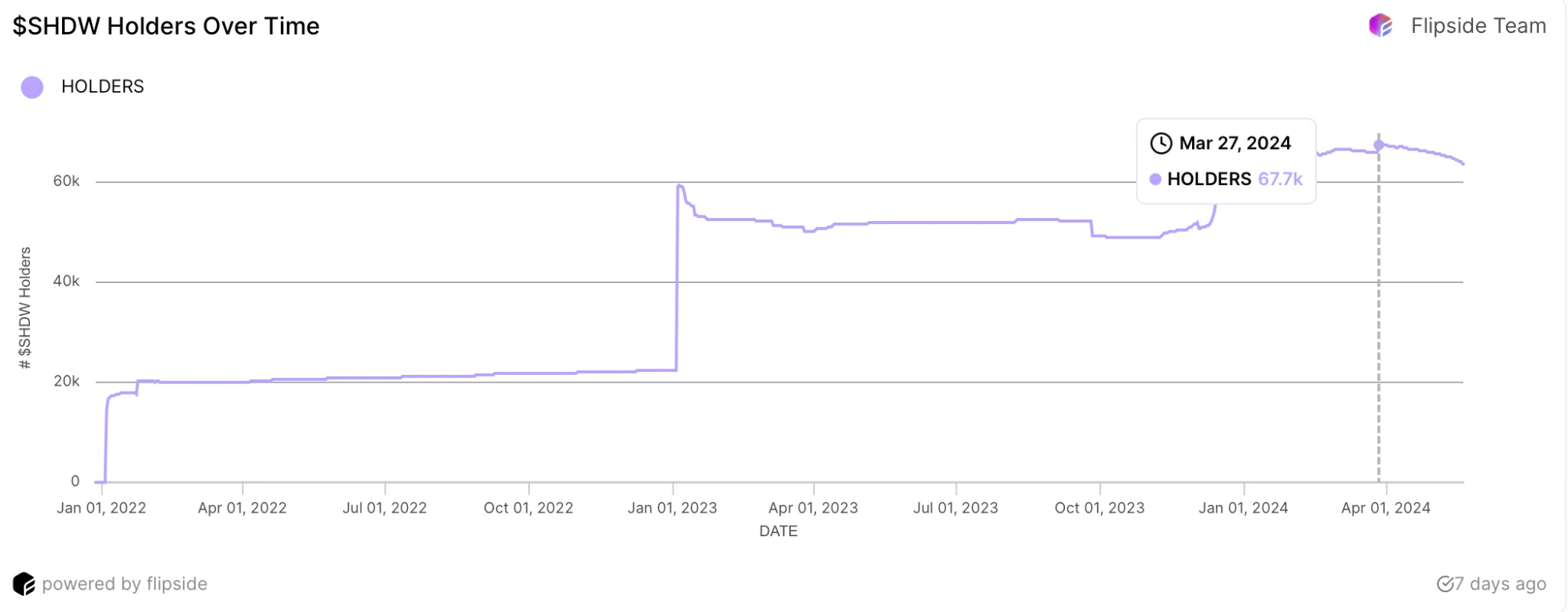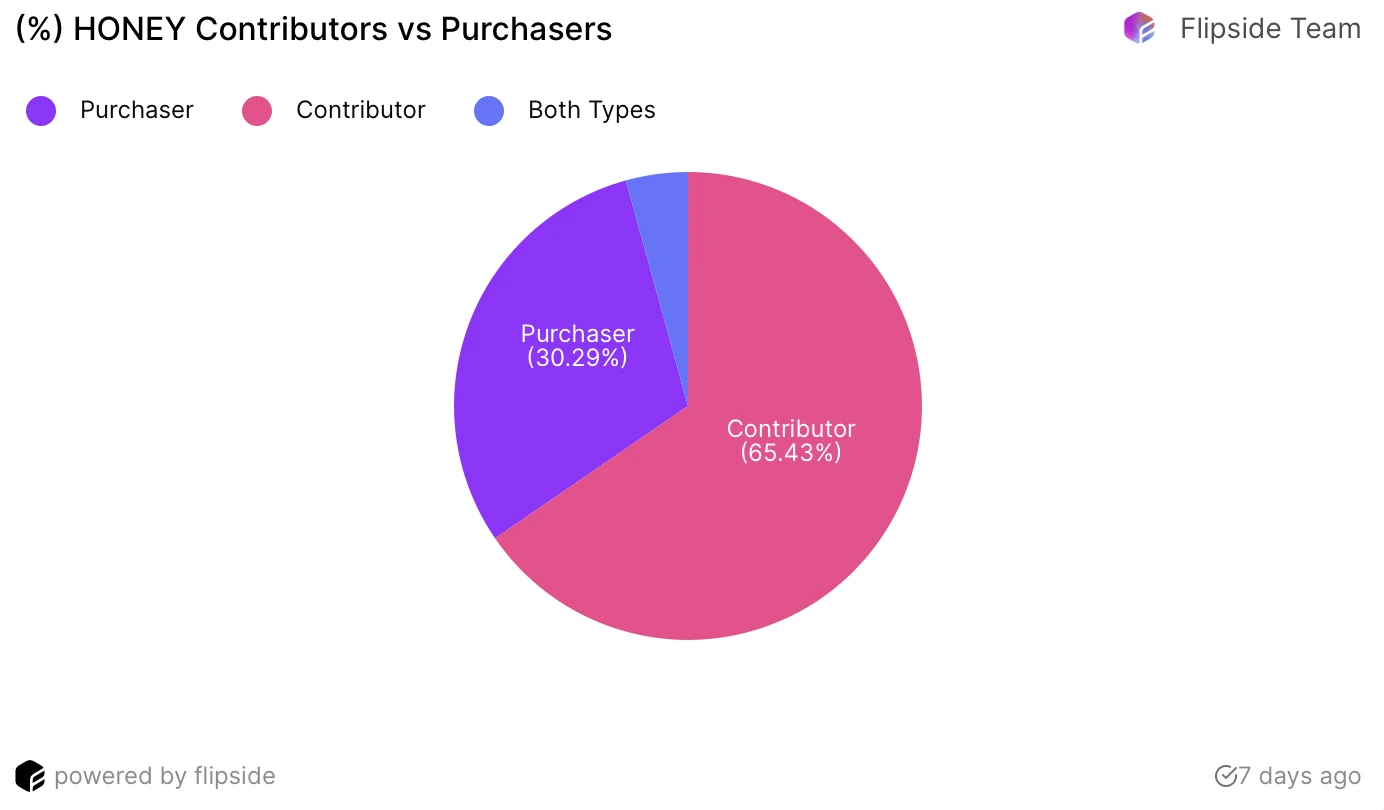सोलाना डीपिन परियोजना अर्ध-वार्षिक रिपोर्ट: संबंधित परियोजनाओं का बाजार मूल्य 10 बिलियन से अधिक है, और हीलियम मोबाइल आकर्षण
मूल लेखक: क्लो, PANews
Resource-intensive industries such as AI and data storage have become the mainstay of real-world infrastructure, and DePIN (Decentralized Physical Infrastructure Network) is also reshaping the blockchain space through its innovative use of existing infrastructure and data-centric business models.
Unlike the traditional Internet of Things (IoT), DePIN is not limited to the hardware devices themselves, but focuses on the value mining and circulation of data. Through a decentralized network architecture and incentive mechanism, DePIN encourages participants to jointly maintain and contribute data, thereby maximizing the value of data.
As of 2023, डेटा from Messari and DePIN.Ninjia show that the DePIN ecosystem includes 650 projects with a total market value of $35 billion. These projects cover various fields, including 250 projects in computing, 200 projects in artificial intelligence, 100 projects in wireless technology, 50 projects in sensors, 50 projects in energy, and 25 projects in services. According to estimates, the current valuation of the DePIN market is close to $2.2 trillion, and it is expected to reach $3.5 trillion in the next four years.
Under the trusted and huge data infrastructure, DePIN must rely heavily on community participation, because the community is the cornerstone of this decentralized hardware network. Many projects, including io.net, are mainly concentrated on Solana, and they want to achieve value transfer and release potential economic value through Solanas advantages in liquidity, speed, scalability and cost.
It has become the first choice for those who have deployed the DePIN project. The FDV (full circulation market value) of the Solana DePIN project exceeds US$10 billion and the market value exceeds US$4 billion.
Recently, Flipside released the Solana depin semi-annual report. In this article, PANews reviewed the four major DePIN projects in Solana: Render Network, Helium, Hivemapper and ShdwDrive, and analyzed the on-chain data and the latest project progress.
Render Network (RNDR)
Render Network provides GPU rendering services through decentralized computing, meeting the needs of creators who need a lot of GPU computing to support the rendering process. The project provides a distributed GPU rendering platform that allows nodes to provide idle GPUs, and creators are no longer limited to hardware conditions, allowing those who need it to use it, and those who own it can profit from it.
Recently, Renders Octane software was recommended by Apple, highlighting its growth momentum. Since migrating to Solana in November 2023, Render has successfully generated 33 million still images. These images may be part of a movie, TV series, game, or other type of visual content. If an NVIDIA RTX 3090 graphics card (currently a high-end consumer GPU) is used for continuous rendering, it will take 1,375 days (about 3 years and 9 months) to complete the same number of rendering tasks.
The number of active node operators peaked at 19,000 in January 2024, an increase of 66.3% since the migration. As the demand for GPU performance continues to grow, more projects are expected to follow Renders footsteps and build infrastructure on high-performance blockchains such as Solana.
Helium Network
The Helium Network wireless network project migrated to the Solana blockchain in April this year. The project allows decentralized wireless networks to provide connection services by utilizing distributed nodes rather than centralized infrastructure, successfully completing a paradigm shift in the communications field.
At present, Helium not only has dual products of IoT and mobile services. In the past six months, the Helium ecosystem has shown significant growth, especially in mobile networks. Helium Mobile attracted nearly 90,000 users in less than a year and has remained above the 2023 level since then. This growth is largely due to Helium Mobile鈥檚 announcement last year that it will launch an all-you-can-eat 5G telecommunications service across the United States for only $20 per month, officially bringing decentralized network services to the general public.
As can be seen from the figure below, Helium Mobiles DC consumption far exceeds that of the Internet of Things (IoT) network, indicating that Helium Mobiles launch of 5G telecommunications services has significantly increased network usage and adoption.
In addition to general user growth, Helium Mobile has also driven network participation through various incentives. The number of Mobile Discovery rewards issued has increased significantly since December 2023, and more and more users are actively participating in network coverage and data collection tasks to receive more MOBILE token rewards, outpacing the growth rate of new users. It is expected that with the acceleration of 5G deployment, the Helium ecosystem has the opportunity to maintain strong growth in the next few years.
हाइवमैपर
The decentralized digital map network Hivemapper competes with traditional players such as Google Maps by drawing maps and spatial data to create real-time 3D maps on a global scale. In 2022, it will launch its native cryptocurrency HONEY to reward dashcam users who provide driving data and road images.
Hivemapper has mapped more than 50 million kilometers of roads in less than two years, and as of the official website, has mapped more than 200 million kilometers of roads in total. Its incentive model promotes strong community participation. As shown in the figure below, nearly one-third of HONEY token holders are active contributors. This high level of participation is driven by Hivemappers incentive model. Contributors can earn HONEY by participating in activities such as mapping, quality assurance, and training Map AI.
And as the demand for high-precision map data for next-generation applications such as autonomous driving grows, decentralized solutions such as Hivemapper are expected to receive more attention and investment.
ShdwDrive
Decentralized storage is a key pillar of the DePIN ecosystem, which aims to provide secure, data hosting solutions. ShdwDrive is one of the emerging players on Solana, aiming to provide scalable object storage for Web3 builders.
Although ShdwDrive has not yet launched its mainnet, it has also achieved results in testnet. In a recent test, the network demonstrated the ability to process up to 38,000 transactions per second under surge conditions. The number of SHDW token holders has also been growing steadily, reaching a peak of 67,000 in March 2024.
DePINs composability with other ecosystems is positioned to transform the economic system through data integrity and scalable suite solutions. Therefore, the continued growth of data volume is inevitable, and projects like ShdwDrive are expected to provide users with more security and flexibility, and are also expected to promote new use cases and innovations in the entire Web3 ecosystem.
What challenges does the DePIN project need to face?
In the process of realizing the vision expressed by all projects, the integration of physical devices and blockchain is the first complex process. The core of the DePIN project is to build a seamless integration of physical devices and data, which not only needs to meet technical requirements but also needs to consider cost-effectiveness and market acceptance. Cooperation with hardware manufacturers such as sensors and monitors and installing DePIN applications on existing devices are currently the practices of most project parties, but how to achieve large-scale device connection and data interaction while ensuring data security and privacy is still a difficult problem to be solved.
Secondly, performance bottlenecks and storage consensus are also major challenges that the DePIN project needs to face. When millions of devices are running on the blockchain at the same time, it is difficult for the existing blockchain infrastructure to provide sufficient performance support. Although high-performance public chains such as Solana provide new options for the DePIN project, they may only be suitable for the minimum viable product (MVP) stage.
Furthermore, the core of decentralization is the verifiability of data, and IoT devices usually involve non-deterministic data sources. By building a strong data traceability and authentication system and using statistical and artificial intelligence techniques to simulate historical data, the authenticity and reliability of the data can be ensured.
The DePIN project is in a development stage full of opportunities, but what cannot be ignored is that the other side brings challenges in data, efficiency and centralization. For example, for applications such as geolocation services, users hope to ensure their privacy, while the project party hopes to ensure the fairness of the system at the same time, which in turn leads to a contradiction between personal privacy and data security. Therefore, how to continue to work hard in technological innovation, long-term business models, etc. will determine whether the DePIN project can truly achieve the integration of the physical world and the digital world and usher in a new era of the next generation of the Internet.
This article is sourced from the internet: Solana DePIN project semi-annual report: the market value of related projects exceeds 10 billion, and Helium Mobile attracts nearly 90,000 users
संबंधित: 1155 बिटकॉइन खो गए और पाए गए: असली पीड़ित ऊब चुके निवेशक हो सकते हैं
मूल लेखक: फ्रैंक, PANews एन्क्रिप्शन के अंधेरे जंगल में, हैकर्स ऑन-चेन संपत्तियों पर नज़र रखते हैं और हमला करने के अवसर की प्रतीक्षा करते हैं। फ़िशिंग के कई पीड़ितों में से, 1,155 बिटकॉइन खोने वाला व्हेल आखिरकार भाग्यशाली था। इस फ़िशिंग मामले को समुदाय द्वारा बड़ी मात्रा में धन शामिल होने के कारण फॉलो किया गया है। कहानी 3 मई को शुरू होती है, जब एक व्हेल उपयोगकर्ता को हैकर द्वारा उसी पहले नंबर के पते के साथ फ़िशिंग हमले का सामना करना पड़ा और 1,155 WBTC खो दिया, जिसकी कीमत लगभग $70 मिलियन थी। इसके बाद, हैकर ने सभी WBTC को 22,955 ETH में बदल दिया और उन्हें दर्जनों खातों में स्थानांतरित कर दिया। 4 मई को, पीड़ित ने ऑन-चेन जानकारी के माध्यम से हैकर को कॉल करना शुरू कर दिया, दूसरे पक्ष से 10% रखने और शेष 90% वापस करने के लिए कहा।










